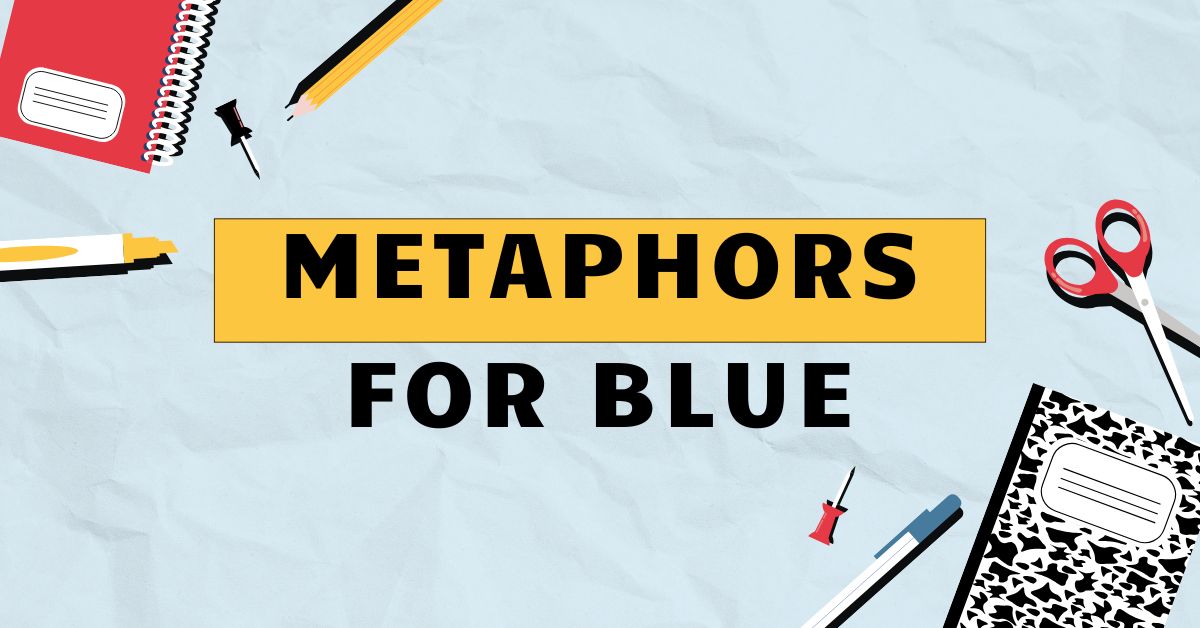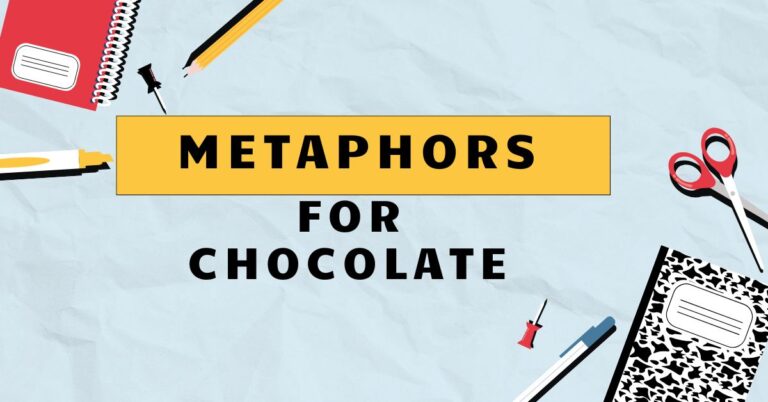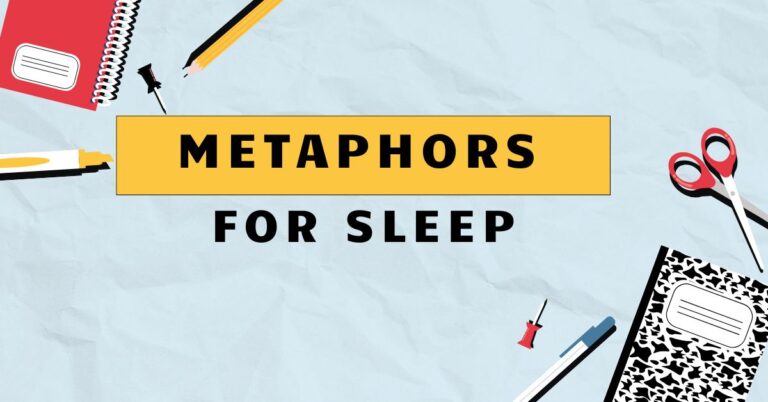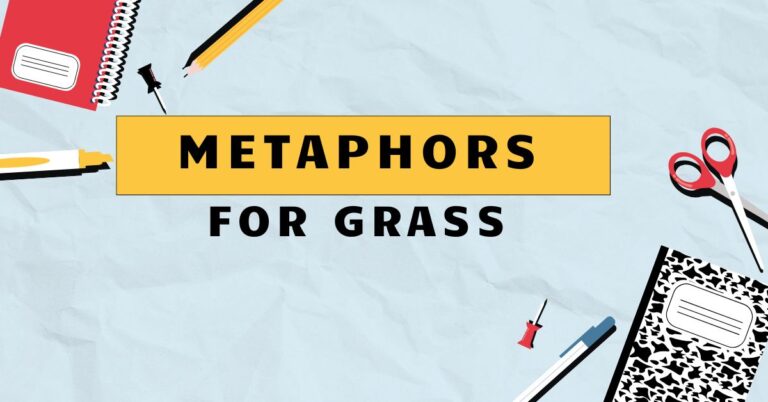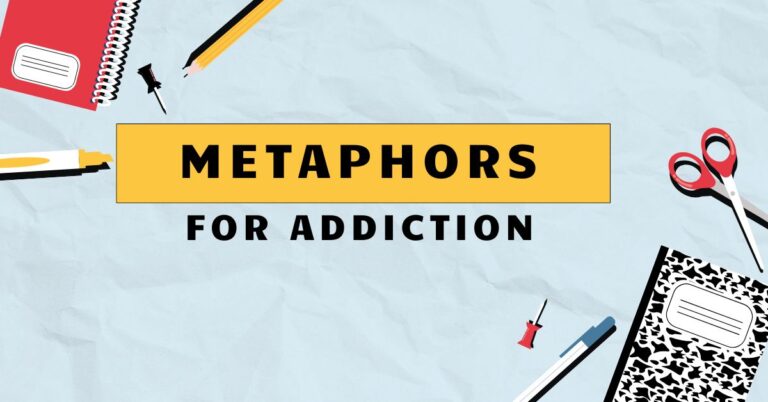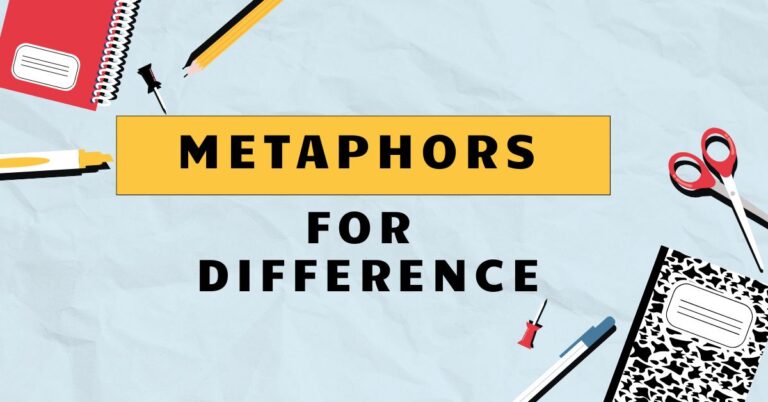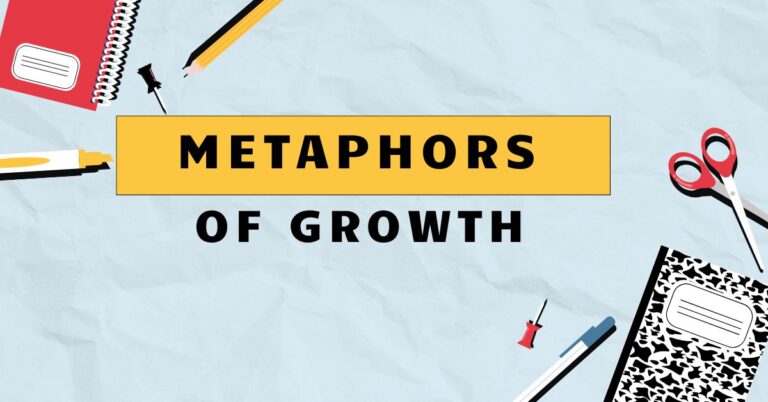33 Metaphors for Blue: Understanding Figurative Language
Metaphors are powerful tools in the English language, allowing us to express abstract ideas and evoke vivid imagery by comparing them to something else. Understanding metaphors, particularly those related to colors like blue, expands our comprehension of literature, poetry, and everyday conversation.
This article delves into the diverse world of metaphors for blue, exploring their meanings, usage, and impact. It will be beneficial for English language learners, writers, and anyone interested in enhancing their understanding of figurative language and enriching their vocabulary.
This comprehensive guide will cover the nuances of blue metaphors and provide practical exercises to master their application.
This article is designed to equip you with the knowledge and skills to identify, interpret, and use metaphors for blue effectively. Whether you are a student aiming to improve your writing or simply curious about the intricacies of language, this resource will offer valuable insights and practical guidance.
By the end of this article, you will be able to appreciate the richness and depth that metaphors bring to our communication, making your interactions more engaging and expressive.
Table of Contents
- Definition of Metaphor and Its Role
- Structural Breakdown of Metaphors
- Types of Metaphors for Blue
- Examples of Metaphors for Blue
- Usage Rules for Metaphors
- Common Mistakes with Metaphors
- Practice Exercises
- Advanced Topics in Metaphor Usage
- Frequently Asked Questions
- Conclusion
Definition of Metaphor and Its Role
Ametaphoris a figure of speech that directly compares two unrelated things without using “like” or “as.” It asserts that one thingisanother, creating a connection that reveals a new understanding or perspective. Metaphors are essential for adding depth, color, and creativity to language.
They allow us to communicate complex ideas in a more accessible and engaging way by drawing parallels between the familiar and the unfamiliar.
Unlike similes, which explicitly use “like” or “as” to make comparisons, metaphors make an implicit comparison, suggesting a deeper, more profound connection. For example, saying “He is as brave as a lion” is a simile, whereas saying “He is a lion in battle” is a metaphor.
The metaphor directly equates the person to a lion, emphasizing his bravery in a more impactful way. Metaphors enrich our language by allowing us to see the world in new and imaginative ways.
They are used extensively in literature, poetry, and everyday speech to convey meaning and evoke emotion.
In English grammar, metaphors function as a type of figurative language, which deviates from the literal meaning of words to create a specific effect. They are typically used in descriptive writing, poetry, and persuasive speeches.
The effectiveness of a metaphor depends on the audience’s ability to understand the connection being made. A well-crafted metaphor can transform a simple statement into a powerful and memorable expression.
Metaphors also play a crucial role in cognitive processes, helping us understand abstract concepts by relating them to concrete experiences.
Structural Breakdown of Metaphors
Understanding the structure of a metaphor involves identifying its key components: thetenor(the subject being described), thevehicle(the object or concept used to describe the tenor), and theground(the shared characteristics between the tenor and the vehicle). The tenor is the actual subject to which metaphorical attributes are ascribed.
The vehicle is the thing to which the tenor is compared. The ground is the common characteristic or similarity between the tenor and the vehicle.
Let’s consider the metaphor “The sea is a blue blanket.”
- Tenor: The sea
- Vehicle: A blue blanket
- Ground: Vastness, covering, color
The effectiveness of a metaphor depends on the strength of the ground, or the shared characteristics, between the tenor and the vehicle. A strong metaphor creates a clear and compelling connection that resonates with the audience.
A weak metaphor, on the other hand, may be confusing or ineffective if the connection is too tenuous or unclear. The structural understanding of a metaphor allows us to analyze how it works and why it is effective.
Furthermore, metaphors often rely on implied meaning and context. The reader or listener must understand the cultural and emotional associations of the vehicle to fully grasp the metaphor’s intended meaning.
For instance, the metaphor “He was drowning in a sea of sorrow” uses the vehicle “sea of sorrow” to convey the overwhelming and consuming nature of the tenor’s grief. The ground here is the vastness and depth of both the sea and the sorrow.
The ability to deconstruct and understand the structural elements of a metaphor enhances our appreciation of its artistry and impact.
Types of Metaphors for Blue
Metaphors for blue can be categorized based on the aspects of blue they emphasize, such as emotional states, descriptive qualities, or symbolic meanings. These categories help us understand the varied ways in which blue can be used metaphorically to convey deeper meanings and evoke specific emotions.
Emotional Metaphors
Emotional metaphors use blue to represent feelings such as sadness, tranquility, or melancholy. These metaphors often draw on the association of blue with calmness and depth, as well as its connection to feelings of sadness or depression.
They help to express complex emotional states in a vivid and relatable way.
For example, phrases like “feeling blue” or “singing the blues” directly link the color blue to feelings of sadness or depression. These metaphors are widely understood and used to express emotional states in everyday language.
The effectiveness of emotional metaphors lies in their ability to tap into shared cultural associations and emotional experiences.
Descriptive Metaphors
Descriptive metaphors use blue to describe physical attributes or characteristics of objects and scenes. These metaphors focus on the visual qualities of blue, such as its hue, intensity, and texture.
They help to create vivid and detailed imagery, allowing the reader or listener to visualize the scene more effectively.
For example, describing the sky as a “blue canvas” or the ocean as a “blue mirror” uses the color blue to evoke a specific visual image. These metaphors highlight the color’s prominence and its ability to define the overall appearance of the scene.
Descriptive metaphors are often used in poetry and descriptive writing to enhance the reader’s sensory experience.
Symbolic Metaphors
Symbolic metaphors use blue to represent abstract concepts or ideas, such as loyalty, wisdom, or peace. These metaphors draw on the cultural and symbolic associations of blue, which vary across different societies and contexts.
They help to convey complex ideas in a concise and meaningful way.
For example, using blue to represent royalty or authority is a symbolic metaphor that draws on historical and cultural associations. Similarly, using blue to symbolize peace or tranquility taps into its association with calmness and serenity.
Symbolic metaphors are often used in literature, art, and political discourse to convey deeper meanings and evoke specific emotions.
Examples of Metaphors for Blue
Below are several examples of metaphors for blue, organized by the categories discussed above. These examples illustrate the diverse ways in which blue can be used metaphorically to convey emotions, describe scenes, and symbolize abstract concepts.
Each table contains a variety of examples to showcase the versatility of blue metaphors.
Emotional Examples
This table provides examples of how blue is used metaphorically to represent different emotional states. These metaphors often draw on the association of blue with sadness, melancholy, and tranquility.
| Metaphor | Explanation |
|---|---|
| He was feeling blue after the breakup. | Blue represents sadness and melancholy. |
| She had a case of the blues. | “The blues” refers to a state of depression or sadness. |
| His heart was a blue ocean of sorrow. | The vastness of the ocean emphasizes the depth of his sadness. |
| A blue mood settled over the room. | Blue represents a somber and melancholic atmosphere. |
| She sang a blue song of lost love. | “Blue song” implies a sad and mournful melody. |
| His spirit was shrouded in a blue haze of despair. | Blue haze symbolizes a state of hopelessness. |
| The news left her with a blue feeling in her heart. | Blue represents a sense of sadness and disappointment. |
| He was lost in a blue reverie of past regrets. | Blue reverie suggests a melancholic reflection on the past. |
| A blue shadow fell across her face as she remembered. | Blue shadow symbolizes a fleeting moment of sadness. |
| Her eyes were pools of blue sorrow. | Blue eyes symbolize deep sadness and grief. |
| He carried a blue burden of guilt. | Blue represents the heavy weight of guilt and remorse. |
| A blue veil of sadness covered her thoughts. | Blue veil symbolizes a pervasive sense of sadness. |
| His laughter was a blue echo in the empty room. | Blue echo suggests a faint and melancholic sound. |
| She felt a blue ache in her soul. | Blue represents a deep and persistent emotional pain. |
| His dreams were painted in shades of blue despair. | Blue shades symbolize the hopelessness and despair in his dreams. |
| He wore a blue mask of sadness. | Blue mask signifies a hidden or suppressed sadness. |
| Her silence was a blue lament. | Blue lament suggests a silent expression of grief. |
| He was adrift in a blue sea of loneliness. | Blue sea symbolizes the vast and isolating feeling of loneliness. |
| She hummed a blue tune of longing. | Blue tune implies a wistful and yearning melody. |
| His memories were tinged with a blue hue of regret. | Blue hue represents a subtle but noticeable sense of regret. |
| He battled a blue demon of depression. | Blue demon represents a persistent and difficult struggle with depression. |
| Her tears flowed like a blue river of grief. | Blue river symbolizes the continuous and overwhelming nature of grief. |
| He was trapped in a blue cage of despair. | Blue cage represents a feeling of confinement and hopelessness. |
Descriptive Examples
This table provides examples of how blue is used metaphorically to describe physical attributes or characteristics of objects and scenes. These metaphors focus on the visual qualities of blue, such as its hue, intensity, and texture.
| Metaphor | Explanation |
|---|---|
| The sky was a blue canvas dotted with clouds. | Blue canvas represents the expansive and picturesque sky. |
| The ocean was a blue mirror reflecting the sky. | Blue mirror symbolizes the reflective and serene surface of the ocean. |
| The mountains faded into a blue silhouette in the distance. | Blue silhouette represents the distant and hazy outline of the mountains. |
| The lake was a blue jewel nestled in the valley. | Blue jewel symbolizes the precious and beautiful nature of the lake. |
| The twilight painted the city in shades of blue. | Blue shades represent the soft and subdued colors of twilight. |
| Her eyes were blue sapphires sparkling in the sunlight. | Blue sapphires symbolize the bright and captivating color of her eyes. |
| The river was a blue ribbon winding through the landscape. | Blue ribbon represents the narrow and winding course of the river. |
| The room was bathed in a blue light from the moon. | Blue light symbolizes the soft and ethereal glow of moonlight. |
| The flowers were blue bells ringing in the breeze. | Blue bells represent the delicate and vibrant color of the flowers. |
| The ice was a blue diamond glittering in the sun. | Blue diamond symbolizes the clear and sparkling nature of the ice. |
| The shadows were long and blue in the evening light. | Blue shadows represent the cool and subdued tones of evening shadows. |
| The fabric was a blue velvet soft to the touch. | Blue velvet symbolizes the rich and luxurious texture of the fabric. |
| The hills were covered in a blue mist. | Blue mist represents the hazy and ethereal atmosphere of the hills. |
| The walls were painted a calming blue. | Calming blue symbolizes the peaceful and serene color of the walls. |
| The bird’s feathers were a brilliant blue. | Brilliant blue represents the vibrant and striking color of the feathers. |
| The night sky was an endless blue expanse. | Endless blue expanse symbolizes the vast and limitless nature of the night sky. |
| The water was a clear blue reflecting the sky above. | Clear blue symbolizes the transparent and reflective quality of the water. |
| The horizon was a faint blue line. | Faint blue line represents the distant and subtle appearance of the horizon. |
| The dress was a deep blue silk. | Deep blue symbolizes the rich and luxurious color of the silk. |
| The car was a sleek blue bullet speeding down the highway. | Sleek blue bullet symbolizes the fast and streamlined appearance of the car. |
| The mural was a vibrant blue tapestry. | Vibrant blue tapestry symbolizes the colorful and intricate design of the mural. |
| The pottery was a delicate blue china. | Delicate blue china symbolizes the refined and elegant quality of the pottery. |
| The flag was a proud blue banner waving in the wind. | Proud blue banner symbolizes the strong and visible presence of the flag. |
Symbolic Examples
This table provides examples of how blue is used metaphorically to represent abstract concepts or ideas, such as loyalty, wisdom, or peace. These metaphors draw on the cultural and symbolic associations of blue.
| Metaphor | Explanation |
|---|---|
| Blue is the color of loyalty and trust. | Blue symbolizes fidelity and reliability. |
| He wore a blue ribbon of honor. | Blue ribbon represents recognition and achievement. |
| Blue is the shade of wisdom and knowledge. | Blue symbolizes intellect and understanding. |
| The company adopted a blue strategy for success. | Blue strategy represents a well-thought-out and intelligent plan. |
| Blue represents the calm and serenity of the ocean. | Blue symbolizes peace and tranquility. |
| She sought a blue haven of peace. | Blue haven represents a place of refuge and tranquility. |
| Blue is the color of the sky, representing hope and freedom. | Blue symbolizes optimism and liberation. |
| He chased a blue dream of success. | Blue dream represents an ambitious and idealistic goal. |
| Blue is the hue of authority and power. | Blue symbolizes leadership and influence. |
| The government implemented a blue policy for stability. | Blue policy represents a strategic and authoritative plan. |
| Blue is the shade of introspection and reflection. | Blue symbolizes contemplation and self-awareness. |
| He entered a blue period of self-discovery. | Blue period represents a time of deep reflection and personal growth. |
| Blue is the color of the Virgin Mary, representing purity. | Blue symbolizes innocence and virtue. |
| She wore a blue cloak of purity. | Blue cloak represents a virtuous and untainted character. |
| Blue is the hue of the night, representing mystery. | Blue symbolizes the unknown and enigmatic. |
| He delved into a blue mystery of the past. | Blue mystery represents an intriguing and unsolved puzzle. |
| Blue is the color of water, representing fluidity and change. | Blue symbolizes adaptability and transformation. |
| She navigated a blue current of change. | Blue current represents a dynamic and transformative force. |
| Blue is the shade of communication and expression. | Blue symbolizes clarity and articulation. |
| He conveyed a blue message of understanding. | Blue message represents a clear and empathetic communication. |
| Blue is the color of healing and health. | Blue symbolizes restoration and well-being. |
| She sought a blue remedy for her ailments. | Blue remedy represents a restorative and healing solution. |
| Blue is the hue of the future, representing potential. | Blue symbolizes possibilities and opportunities. |
| He envisioned a blue horizon of possibilities. | Blue horizon represents a future full of potential and promise. |
Usage Rules for Metaphors
Using metaphors effectively requires understanding certain rules and guidelines. The most important rule is to ensure that the comparison is clear and relevant.
The connection between the tenor and the vehicle should be easily understood by the audience. Avoid using metaphors that are too obscure or confusing, as they may detract from your message.
Another important rule is to avoid mixing metaphors. Mixing metaphors occurs when you combine two or more unrelated metaphors in a way that creates a nonsensical or contradictory image.
For example, saying “He was skating on thin ice while building bridges” mixes the metaphor of “skating on thin ice” (being in a precarious situation) with the metaphor of “building bridges” (establishing connections), resulting in a confusing and illogical statement.
Additionally, be mindful of the context in which you are using metaphors. The appropriateness of a metaphor depends on the audience, the setting, and the overall tone of your communication.
A metaphor that is effective in one context may be inappropriate in another. Consider the cultural and emotional associations of the vehicle to ensure that it resonates with your audience in the intended way.
Overusing metaphors can also diminish their impact. Use them sparingly and strategically to enhance your writing or speech without overwhelming the audience.
Common Mistakes with Metaphors
One of the most common mistakes with metaphors is using clichés. Clichés are overused metaphors that have lost their impact and originality.
While they may be easily understood, they often fail to engage the audience or add depth to your communication. Instead of relying on clichés, strive to create fresh and original metaphors that offer new insights and perspectives.
Another common mistake is using mixed metaphors, as mentioned earlier. Mixing metaphors can create confusion and undermine the clarity of your message.
Always ensure that your metaphors are consistent and coherent. If you find yourself mixing metaphors, revise your writing to create a more unified and logical comparison.
Misunderstanding the connotations or cultural associations of a metaphor can also lead to miscommunication. Be aware of the potential interpretations of your metaphors, and choose vehicles that are appropriate for your audience and context.
If you are unsure about the connotations of a particular metaphor, research its origins and usage to ensure that it conveys the intended meaning.
Here are some examples of common mistakes with metaphors:
| Incorrect | Correct | Explanation |
|---|---|---|
| He was a diamond in the rough, but he was also a needle in a haystack. | He was a diamond in the rough. | Mixing metaphors: a diamond in the rough and a needle in a haystack are unrelated. |
| Feeling blue is a walk in the park. | Feeling blue is a heavy burden. | Inappropriate comparison: “walk in the park” trivializes the feeling of sadness. |
| The news hit him like a ton of bricks, and he was also over the moon. | The news hit him like a ton of bricks. | Conflicting emotions: being hit hard and being overjoyed are contradictory. |
Practice Exercises
Test your understanding of metaphors for blue with the following exercises. Identify the metaphors and explain their meanings in the context provided.
Exercise 1: Identifying Metaphors
Identify the metaphors in the following sentences and explain what they mean.
| Question | Answer |
|---|---|
| 1. Her tears were a blue river of sorrow. | Metaphor: “blue river of sorrow.” Explanation: Her tears flowed continuously and deeply, like a river, expressing her profound grief. |
| 2. He was lost in a blue fog of confusion. | Metaphor: “blue fog of confusion.” Explanation: He was disoriented and uncertain, as if enveloped in a dense fog, due to his confusion. |
| 3. The sky was a blue canvas painted with stars. | Metaphor: “blue canvas painted with stars.” Explanation: The night sky was vast and expansive, like a canvas, adorned with the brilliance of stars. |
| 4. She sought solace in a blue ocean of tranquility. | Metaphor: “blue ocean of tranquility.” Explanation: She sought peace and calmness in a vast and serene environment, like a tranquil ocean. |
| 5. His heart was a blue stone, cold and unfeeling. | Metaphor: “blue stone.” Explanation: His heart was emotionally distant, cold, and unresponsive, like a hard and unyielding stone. |
| 6. The night was a blue velvet curtain. | Metaphor: “blue velvet curtain.” Explanation: The night was soft, dark, and luxurious, like a velvet curtain, enveloping everything in darkness. |
| 7. He carried a blue burden of regret. | Metaphor: “blue burden of regret.” Explanation: He bore a heavy emotional weight of remorse and sorrow for his past actions. |
| 8. The lake was a blue eye staring at the sky. | Metaphor: “blue eye staring at the sky.” Explanation: The lake was clear, reflective, and still, as if observing the sky above with a watchful gaze. |
| 9. Her voice was a blue whisper in the wind. | Metaphor: “blue whisper in the wind.” Explanation: Her voice was soft, gentle, and barely audible, like a whisper carried by the wind. |
| 10. He was trapped in a blue cage of despair. | Metaphor: “blue cage of despair.” Explanation: He felt confined and hopeless, as if imprisoned in a state of deep despair. |
Exercise 2: Creating Metaphors
Create your own metaphors for blue based on the given prompts.
| Prompt | Your Metaphor |
|---|---|
| 1. Describe the feeling of loneliness using blue. | The loneliness was a blue desert, vast and empty. |
| 2. Describe a calm lake using blue. | The lake was a blue mirror, reflecting the serene sky. |
| 3. Describe a sad song using blue. | The song was a blue lament, filled with sorrowful notes. |
| 4. Describe the night sky using blue. | The night sky was a blue ocean, dotted with shimmering stars. |
| 5. Describe a feeling of peace using blue. | Peace was a blue haven, sheltering me from the storm. |
| 6. Describe a memory of sadness using blue. | The memory was a blue shadow, lingering in my mind. |
| 7. Describe a feeling of hope using blue. | Hope was a blue flame, flickering in the darkness. |
| 8. Describe a feeling of confusion using blue. | Confusion was a blue maze, with no clear path. |
| 9. Describe a moment of clarity using blue. | Clarity was a blue dawn, breaking through the darkness. |
| 10. Describe a feeling of longing using blue. | Longing was a blue echo, resonating in my heart. |
Advanced Topics in Metaphor Usage
For advanced learners, exploring the use ofextended metaphorsandconceitscan further enhance their understanding of figurative language. An extended metaphor is a metaphor that is developed over several lines or paragraphs, allowing for a more detailed and nuanced comparison.
Conceits, on the other hand, are elaborate and unconventional metaphors that often involve surprising or paradoxical comparisons. These advanced techniques require a deep understanding of metaphor structure and usage, as well as a creative and imaginative approach to language.
Another advanced topic is the use of metaphors in different genres and contexts. Metaphors are used differently in poetry, prose, and drama, and their effectiveness depends on the specific conventions of each genre.
Understanding these nuances can help writers and speakers tailor their metaphors to achieve the desired effect. Additionally, exploring the cultural and historical context of metaphors can provide deeper insights into their meaning and significance.
Some metaphors may have different connotations in different cultures, and understanding these differences is crucial for effective cross-cultural communication.
Exploring the works of famous poets and writers who are known for their masterful use of metaphors can provide valuable inspiration and guidance. Analyzing their techniques and strategies can help advanced learners develop their own unique voice and style.
For example, Shakespeare’s plays are filled with rich and complex metaphors that continue to resonate with audiences today. Studying these examples can provide a deeper appreciation for the power and artistry of metaphorical language.
Furthermore, experimenting with different types of metaphors and practicing their application in various writing exercises can help advanced learners hone their skills and expand their creative potential.
Frequently Asked Questions
- What is the difference between a metaphor and a simile?
A metaphor directly compares two unlike things without using “like” or “as,” while a simile uses “like” or “as” to make the comparison explicit. For example, “He is a lion” is a metaphor, whereas “He is like a lion” is a simile. The metaphor asserts that he is a lion, while the simile suggests he is similar to a lion.
- Why are metaphors important in language?
Metaphors add depth, color, and creativity to language. They allow us to communicate complex ideas in a more accessible and engaging way by drawing parallels between the familiar and the unfamiliar. They also enhance our understanding and appreciation of language by offering new perspectives and insights.
- How can I avoid mixing metaphors?
To avoid mixing metaphors, ensure that the comparisons you are making are consistent and coherent. Avoid combining unrelated metaphors that create nonsensical or contradictory images. If you find yourself mixing metaphors, revise your writing to create a more unified and logical comparison.
- What are some common clichés involving the color blue?
Some common clichés involving the color blue include “feeling blue” (sad), “out of the blue” (unexpectedly), and “true blue” (loyal). While these clichés are easily understood, they often lack originality and impact. Strive to create fresh and unique metaphors to enhance your communication.
- How can I use metaphors more effectively in my writing?
To use metaphors more effectively, ensure that the comparison is clear and relevant. Choose vehicles that are appropriate for your audience and context. Avoid overusing metaphors, and use them strategically to enhance your writing without overwhelming the audience. Also, practice creating original and imaginative metaphors to add depth and creativity to your work.
- What is an extended metaphor?
An extended metaphor is a metaphor that is developed over several lines or paragraphs, allowing for a more detailed and nuanced comparison. It provides an opportunity to explore the connections between the tenor and the vehicle in greater depth, creating a richer and more impactful image.
- How do metaphors vary across different cultures?
Metaphors can vary significantly across different cultures due to differences in cultural values, beliefs, and experiences. A metaphor that is effective in one culture may be confusing or inappropriate in another. Be mindful of the cultural context when using metaphors, and research their connotations to ensure that they convey the intended meaning.
- Can metaphors be used in scientific writing?
Yes, metaphors can be used in scientific writing to explain complex concepts in a more accessible and engaging way. However, it is important to use metaphors carefully and ensure that they do not oversimplify or distort the scientific concepts being discussed. Metaphors can be a powerful tool for enhancing understanding and communication in scientific contexts, but they should be used with precision and accuracy.
- What is the ‘tenor’ and ‘vehicle’ in a metaphor?
The tenor is the subject of the metaphor – the thing being described. The vehicle is the thing the tenor is being compared to. In the phrase “The sea is a blue blanket,” the sea is the tenor, and the blue blanket is the vehicle.
- Why is understanding the ‘ground’ important in a metaphor?
The ground refers to the shared characteristics between the tenor and the vehicle. A strong ground makes the metaphor more effective and understandable. Without a clear ground, the comparison can feel arbitrary and confusing.
Conclusion
Mastering the use of metaphors for blue is a valuable skill that enhances communication and enriches understanding. By grasping the definition, structural elements, and various types of blue metaphors, learners can effectively employ them in writing and speech.
Understanding the nuances of emotional, descriptive, and symbolic metaphors allows for more precise and impactful expression. Paying attention to usage rules and avoiding common mistakes ensures clarity and coherence in metaphorical language.
Practice is key to mastering any language skill, and metaphors are no exception. By engaging in exercises that involve identifying and creating metaphors, learners can develop their ability to use them creatively and effectively.
Exploring advanced topics, such as extended metaphors and conceits, can further enhance their understanding and appreciation of figurative language. Finally, by understanding the role of metaphors in creating vivid imagery and conveying complex emotions, writers and speakers can elevate their craft and connect with their audience on a deeper level.
Continue to explore, experiment, and practice, and you will find that metaphors become an invaluable tool in your linguistic arsenal.
Remember to always consider your audience, context, and purpose when using metaphors. The most effective metaphors are those that resonate with your audience and enhance your message.
By following the guidelines and principles outlined in this article, you can confidently and skillfully use metaphors to add depth, color, and creativity to your communication. So, embrace the power of metaphors and let your imagination soar!

